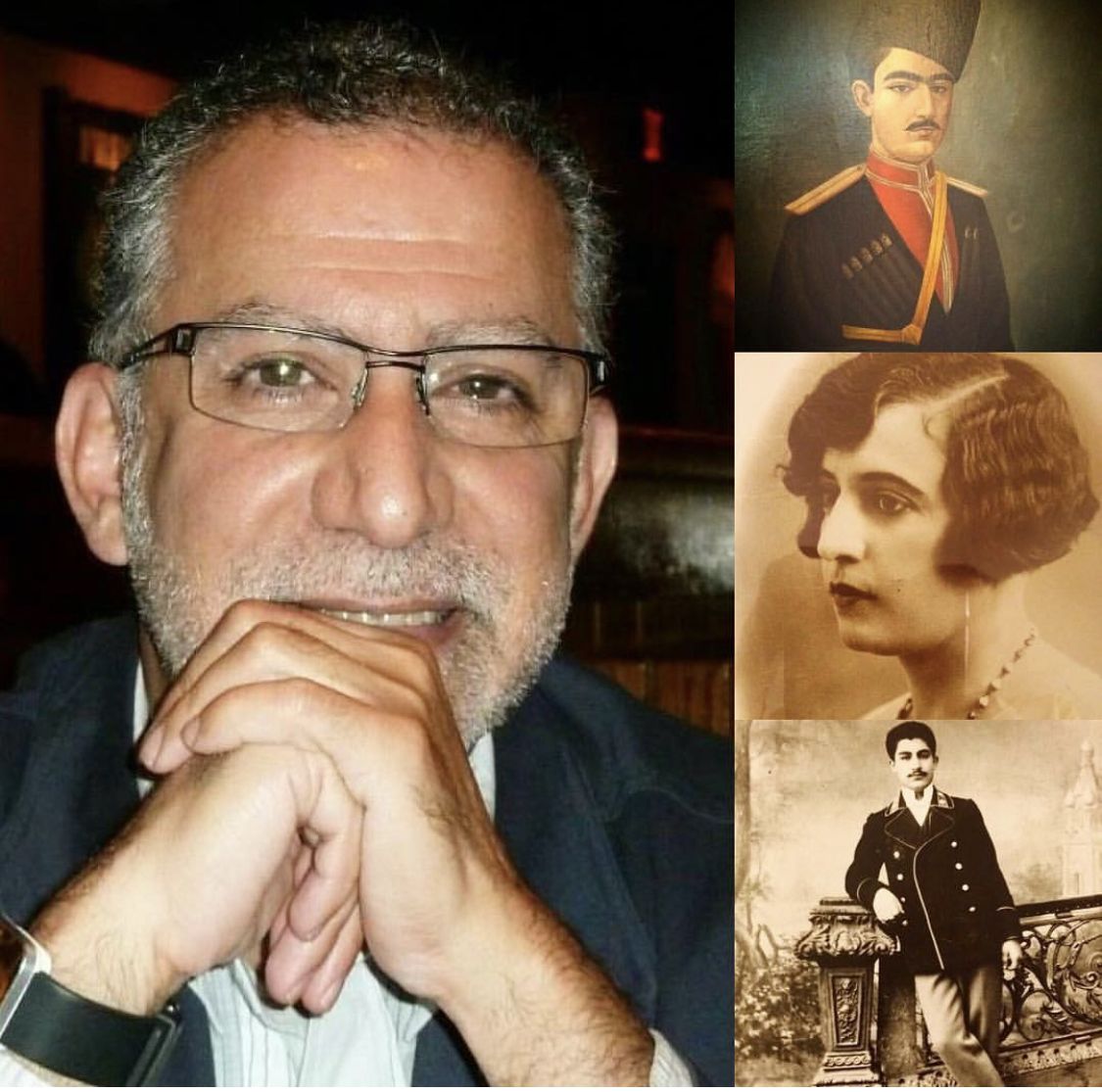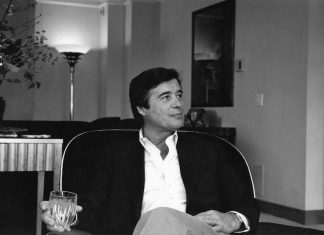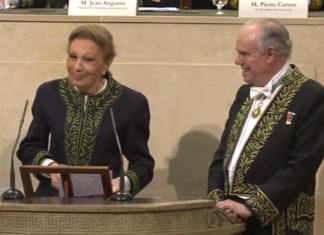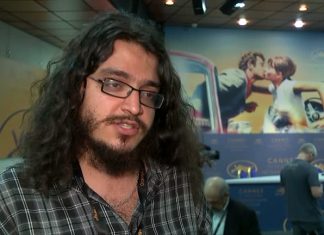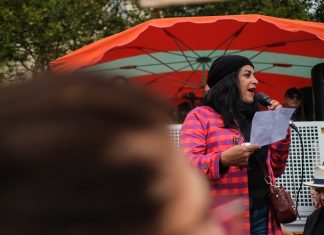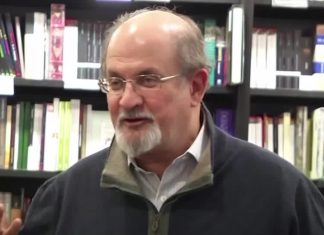Sepehr Haddad — a recording artist who co-founded the band Shahin & Sepehr — has just released his debut novel, “A Hundred Sweet Promises,” based on a true family story told to him by his grandmother shortly before the 1979 Iranian Revolution.
[aesop_image img=”https://kayhanlife.com/wp-content/uploads/2021/07/20200419_125227.jpg” panorama=”off” credit=”Sepehr Haddad.” align=”center” lightbox=”off” captionsrc=”custom” captionposition=”left” revealfx=”off” overlay_revealfx=”off”]
The plot revolves around Haddad’s grandfather Nasrosoltan Minbashian, who traveled to Imperial Russia to study music, eventually became the piano tutor of the Czar’s niece, and fell in love with the princess.
Upon his return to Iran, Nasrosoltan became the director of the Iranian Conservatory (Tehran Conservatory of Music).
Haddad comes from a long line of musicians. His great-grandfather Salar Moazaz Gholam-Reza Minbashian penned the first Iranian national anthem in July 1909 to honor the liberation of Tehran from the military forces of the Russian military governor of Tehran, Colonel Liakhov.
[aesop_content color=”#ffffff” background=”#0892d0″ columns=”1″ position=”none” imgrepeat=”no-repeat” disable_bgshading=”off” floaterposition=”left” floaterdirection=”up” revealfx=”off” overlay_revealfx=”off” aesop-generator-content=”Video produced by & courtesy of IACC using pictures from the book. Song sung by Sepehr Haddad’s mother, Anvar.
“]Video produced by & courtesy of IACC using pictures from the book.
Song sung by Sepehr Haddad’s mother, Anvar.
[/aesop_content]
Kayhan Life recently spoke to Sepehr Haddad.
What is your book about?
The book is the story of my grandfather, Nasrosoltan Minbashian’s life, as relayed to me more than 40 years ago by my grandmother. The central part of the story happens in 1913, on the eve of World War I. Nasrosoltan, a music composer, travels from Persia to Russia to study classical music at the St. Petersburg Conservatory with such masters as Rimsky-Korsakov. While there, he falls in love with a Romanov princess, but members of the Russian royalty consider this a forbidden love. It is a novel based on a true story, set against the backdrop of the final days of Imperial Russia.
What does the title “A Hundred Sweet Promises” mean?
A promise is a vow, a declaration assuring that one will or will not do something. Usually, when two people are in love, many promises are made regarding their loyalty and fidelity to one another, no matter the circumstances. In this novel, the lovers make many such vows, perhaps hundreds [of them]. It is up to the reader to decide if the characters remain faithful to their hundreds of sweet promises to each other, hence the title.
[aesop_image img=”https://kayhanlife.com/wp-content/uploads/2021/07/A-Hundred-Sweet-Promises-004.jpg” panorama=”off” credit=”Book Cover. ” align=”center” lightbox=”off” captionsrc=”custom” captionposition=”left” revealfx=”off” overlay_revealfx=”off”]
What inspired you to write this book?
My grandmother revealed this secret about my grandfather’s life to me in 1978, right before the revolution in Iran. Soon after that, I left to go to college in California, and forgot what my grandmother had told me.
Thirty-five years later, in 2010, I decided to take my American wife and American-born sons to Iran on a visit. We passed by my grandmother’s apartment building in Ferdowsi Square, and I suddenly remembered what she had told me. When I told my wife the story, she suggested that I write a book about it.
Your book is dedicated to your American-born sons. What has been their reaction so far, and are they interested in Persian culture and your family history?
I wrote the book because I wanted to leave behind a document for my children and their children about their Persian side of the family’s achievements in music education in Persia/Iran. But I did not want to write a biography that they might have found dry, or like college classwork. So, to tell the story but make it more palatable to them, and with the general interested public, I decided to write it in novel form. I also tried to intertwine Persian history, poetry, and fables with a historically accurate portrayal of their ancestors’ lives.
Both my sons Kian and Riyan are extremely interested in music and are writing songs together. I wanted them to know about their great-great-grandfather, Salar Moazaz Minbashian, who wrote Iran’s first national anthem in 1909. And, how their great grandfather Nasrosoltan Minbashian studied with the masters of classical music in Russia and later went on to become the Director of the Iranian Conservatory (Tehran Conservatory of Music).
When I took them to Iran in 2010 to see the country’s beauty, culture, historical sites, food, people, they loved it as I knew they would. I wanted their understanding of this great culture to be first-hand rather than from the media, which often does not portray Iran’s true beauty and glory.
[aesop_image img=”https://kayhanlife.com/wp-content/uploads/2021/07/IMG_4646.jpg” panorama=”off” credit=”Book Cover. ” align=”center” lightbox=”off” captionsrc=”custom” captionposition=”left” revealfx=”off” overlay_revealfx=”off”]
Where were you born, raised, and educated?
I was born in Washington D.C. in 1957 while my father was studying and working there. In 1965 our family returned to Iran, and I went to Miss Mary (Bahar-e-No) elementary school, then to Iranzamin (Tehran International School), and upon graduation in 1975, I came to the United States for college. I ended up at the University of California at Davis and graduated with a master’s degree in International Agricultural Development.
In 1988 I moved from California to Washington DC and began working for the United States Environmental Protection Agency (USEPA). During that time, I was fortunate enough to reconnect with my talented guitarist schoolmate from Iran, Shahin Shahida, and we formed the band “Shahin & Sepehr.”
All our six albums with Virgin/EMI have been in the Top 20 Billboard charts. Our debut album “One Thousand and One Nights” made it to the #6 spot on Billboard, and our sophomore album “e” was nominated for the “Best New Age” album in 1995.
[aesop_image img=”https://kayhanlife.com/wp-content/uploads/2021/07/IMG_4649.jpg” panorama=”off” credit=”Musical Duo Shahin & Sepehr.” align=”center” lightbox=”off” captionsrc=”custom” captionposition=”left” revealfx=”off” overlay_revealfx=”off”]
How much research did you need to do, and how long did it take you to finish the book?
I retired from the EPA in 2015 and spent six years researching and writing the book published in March 2021. The research was the most fun and, at the same time, the most challenging part of writing because I wanted to be historically accurate considering the periods I was writing about in Persia (Iran) and Russia in the early 20th century.
What part of the book did you have the hardest time writing? Which part was the most fun to write?
As a first-time novelist, the most challenging part for me was creating the fictional dialogue between the characters in the novel, especially how to write the way people spoke back then with a certain level of formality. However, as my writing progressed, I became more comfortable with that aspect of writing.
The most enjoyable part was writing about the budding romance between my grandfather and the Romanov princess, always keeping in mind how my grandmother had told me the story.
Which of the characters do you relate to the most and why?
I relate to two characters, and they are genuinely historical fiction in that they did not exist in real life, but I loved creating them and their conversations. One is Nasrosoltan’s best friend, Rustam Somkhishvili, a Georgian-born Armenian gentleman. The second is Grigoryan, the cemetery keeper at the Pantheon of Khojivank in Tbilisi, Georgia. The sentence I enjoy the most that Rustam utters to his young friend Nasrosoltan is, “Divine Providence is under no obligation to be kind to us all!”
The other man Grigoryan is a young man but is distracted and aloof since he has had a bad experience in loving a woman that left him for another man. He says something to the protagonist when they meet that comes to haunt Nasrosoltan later in the book.
If you could meet your characters, what would you say to them?
I would have liked to hear the princess’s side of the story to see how much of what my grandmother told me was factually accurate. Also, if I had a chance to talk to my grandfather (whom I never met), I would want to hear who the true love of his life was, my grandmother or the princess?
You chose a British Shakespearean actor to narrate the audiobook for your novel. Why did you pick him?
Tim Fearon is the British voice actor you mention, and he is genuinely excellent. You can hear a sample of his narration here: bit.ly/-shab
Even though many had commented that I should narrate it myself, I am glad we had Tim do the narration. Being a Shakespearean voice actor, as you mentioned, he gives a solid and passionate performance.
When we released the novel in March, we suddenly garnered much attention from Hollywood and even some European studio interest for a miniseries or a feature film based on the book. Thinking along the lines of a “Downton Abbey” type Netflix miniseries was an additional reason we chose Tim.
Do you have other writers in your family?
Yes, my niece is a famous and successful author, Alexandra Monir, the daughter of my brother Hormoz Saleh. She has published seven popular young adult novels to date, beginning with her internationally bestselling debut, Timeless. I’m immensely proud of her accomplishments. She is also an accomplished recording artist.




